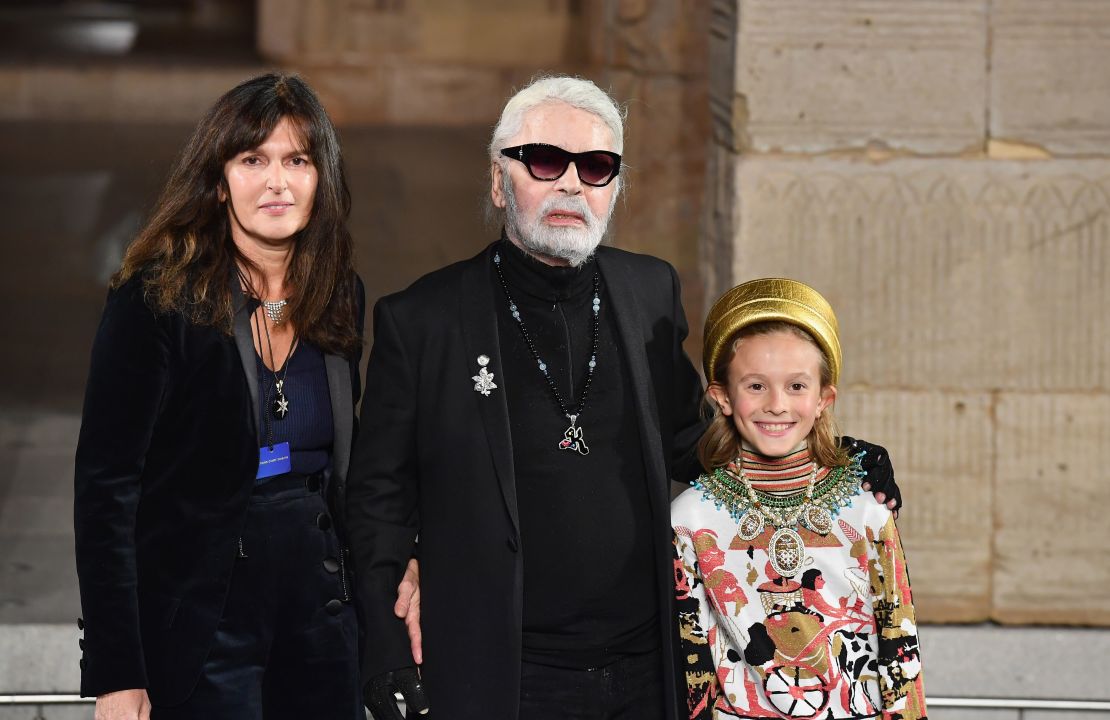On Tuesday, Chanel will host its first runway show since the death of Karl Lagerfeld, its creative director of 36 years, on Feb. 19. Shortly after his passing, the storied French brand announced that Virginie Viard, Lagerfeld’s right hand and director of Chanel’s fashion creation studio, would succeed him, quashing longstanding rumors of more prominent designers taking over the coveted role.
Many believe Viard, who started as an intern in the embroidery department in 1987, was chosen because of her intimate knowledge of the brand, and could be trusted to honor the legacy of both Lagerfeld and Chanel’s founder, Gabrielle “Coco” Chanel, while ensuring the brand’s longevity.
“I very much view Virginie, who was by Karl Lagerfeld for 30 years, as someone who really understands the brand’s DNA and his contribution to that,” said Bronwyn Cosgrave, a fashion historian and co-host of podcast “A Different Tweed.”
She likens Viard’s promotion to Tom Ford’s ascent from women’s ready-to-wear to creative director of Gucci in 1994, when he replaced Dawn Mello: “No one knew who (Ford) was, but he had been behind the scenes. He was more than a safe pair of hands.”

Changing designers is never an easy task, but anyone replacing Lagerfeld, whose persona and achievements reached mythical proportions, will have particularly large shoes to fill. Far more than just a master of his craft, Lagerfeld provided the blueprint for successful, continual brand evolution and levering one’s fame and personal brand to secure larger projects, such as his collaboration with high street giant H&M in 2004. He became the archetype of the modern fashion designer.
“Karl Lagerfeld forged the modern template for rejuvenating a heritage brand, and he was unique in being able to keep Chanel vibrant and contemporary for many decades with his design prowess, vast culture and an unrivaled work ethic,” said Miles Socha, editor-in-chief of WWD. “In many ways, he is irreplaceable, the likes of which we might never see again,”
Lagerfeld’s death signifies the end of the old guard of designers as artists: cultural savants who mined history and the world’s cultures for inspiration and transformed elegant sketches into whole collections with the help of their loyal ateliers. He wasn’t the kind of designer who had to restrict production because of budget. With lifetime contracts at both Chanel and Fendi, where he served as creative director for 54 years, he never worried about his standing in either company. He had free reign to do as his creative mind dictated.
Karl Lagerfeld in photos: The life of a fashion pioneer
But since Lagerfeld was granted his prestigious posts, the role of the designer at luxury houses has changed dramatically. Talent is no longer enough. More and more, there’s an expectation of business savvy, an understanding of digital media and a connection to the next generation of shoppers, even if this comes without formal design training.
“Luxury fashion is a business driven by the offer, not need, and only creative propositions and new ideas can deliver this,” said Socha. “Sharp companies leave designers free to create desire. But, of course, successful designers deliver newness that is wearable.”
Louis Vuitton’s decision to have Virgil Abloh – the founder of luxury streetwear label Off-White and a longtime Kanye West collaborator – replace Kim Jones as head of menswear last year suggests that heritage brands are coming to terms with this. While he may not have studied fashion (he has degrees in engineering and architecture), Abloh has a huge social following (his personal Instagram account has 3.6 million followers; Off-White has 6.7 million) that he has masterfully leveraged for social engagement, data-driven consumer insight, product promotion and brand extension. He’s the perfect partner for any label looking to dominate the digital arena because of his loyal following, and his digital and financial shrewdness.
Louis Vuitton’s gamble seems to have paid off. At a Tokyo pop-up held in January – before Abloh’s first collection officially landed in stores – sales of his designs outpaced those from the brand’s much-hyped collaboration with streetwear brand Supreme, the brand’s chief executive officer Michael Burke told Women’s Wear Daily. But is the “pure unadulterated desire” Burke attributed the collection’s success may not be enough to maintain a brand like Chanel?
“Today, there isn’t only one recipe for success. Brands can be energized by a marquee designer, or a hidden talent, or a compelling purpose, like sustainability or inclusiveness,” said Socha. “But we must remember that Chanel is a couture house, probably the largest and most important one in the world, so technical skills are also required, and these are rare.”
To that end, Viard may be the perfect fit. Having worked alongside Lagerfeld for decades, she will have picked up the necessary savoir-faire, even if she has no social media footprint to speak of. But in celebrity- and social media-obsessed culture, where the industry increasingly uses social platforms to speak to a new generation, this may be the ultimate strategy to differentiate Chanel. Opting out is the ultimate luxury.
“We must remember that Chanel is a private company, and it is able to take risks outside the glare of Wall Street. When the Wertheimers” – billionaire bothers Alain and Gerard, who have a controlling stake in the company – “chose Karl Lagerfeld in 1983, it was a gamble for both parties. Virginie Viard, having worked at the elbow of a fashion mastermind for decades, offers a sure set of hands at a brand with huge momentum and enormous cachet,” said Socha. “She may surprise and dazzle us all.”







































